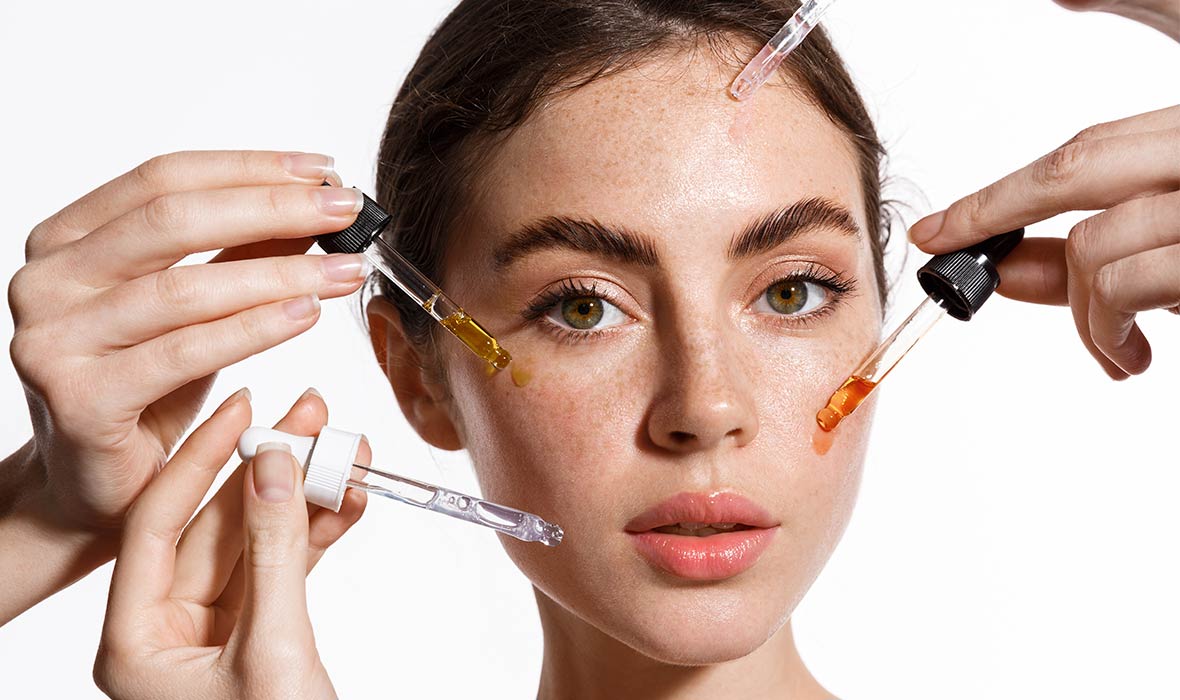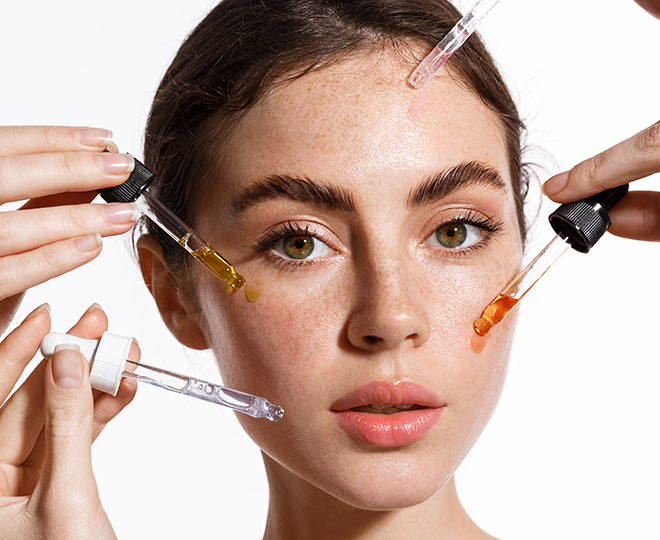With all the skincare ingredients on the market and all the ways they interact, it can be overwhelming trying to understand what each ingredient does, how it works, and which can be used together or not — especially if you’re just starting to put together a routine. Knowing what’s in the formulas you’re considering is extremely important so you can better understand how the products you are applying work and how best to take advantage of their benefits, without irritating your skin.
To make things easier, one helpful way to organize things as you look over ingredients is to identify the active ingredients first.
What are active ingredients
Active ingredients are like the movie stars of the skincare product world. They are the front and center ingredients that provide the most direct benefit in treating whatever the product claims to treat. It’s the chemical or molecule, often dosed and labeled with a percentage, that directly works to accomplish the product’s goals. If you’re applying a formula to "treat acne," the product may contain an active ingredient like salicylic acid that, you guessed it, helps treat acne!
But since the skin has many needs, a combination of skincare ingredients is often included in a formula. You can refer to these as inactive ingredients. They may be common among many different formulas. Or they may have a secondary effect, such as helping hydrate, balance or moisturize the skin in addition to the product’s primary function.
Popular skincare ingredients to treat acne
To help you familiarize yourself with the skincare ingredient landscape, here are some common active ingredients with details of what they treat and how they work:
-
Salicylic acid
Salicylic acid is a beta-hydroxy acid, originally derived from willow tree bark, that helps exfoliate the skin to treat acne and help keep pores free from dead skin cells and other debris. It’s a common ingredient in over-the-counter skincare formulas including the Complexion Perfecting Hydrator from the Proactiv+® Acne Treatment System. Salicylic acid is a chemical exfoliant that works gently on the surface of your skin. However, it doesn’t kill acne-causing bacteria associated with certain acne, which is why it can come teamed up with the next ingredient in this list.
-
Benzoyl peroxide
Superhero ingredient Benzoyl peroxide fights acne by topically targeting bacteria inside your pores. It’s actually one of the first acne treatment ingredients ever used. It works by delivering oxygen into your pores, where acne-causing bacteria can get trapped beneath a mixture of dead skin cells and excess oil (sebum). The bacteria can’t survive in a high-oxygen environment, so benzoyl peroxide effectively attacks acne at its inception. It can even help out as an anti-inflammatory to reduce the redness that comes along with pimples. In the Proactiv+ Acne Treatment System, the Pore Targeting Treatment is dermatologist-developed to deliver the benzoyl peroxide directly to your pores.
-
Alpha-hydroxy acids
Alpha-hydroxy acids are the umbrella term for several other skincare ingredients such as glycolic acid. Like salicylic acid (a beta-hydroxy acid), it can help exfoliate your skin and even help other products in your skincare routine absorb deeper into your skin.
-
Adapalene
Adapalene is a topical retinoid that works by promoting faster cell turnover, the process by which your dead skin cells reach the surface of your skin, shed and are replaced by new, fresh skin cells. A retinoid is a type of ingredient derived from vitamin A, and is extremely popular in modern acne treatments. Cell turnover has an effect on so many characteristics of your skin, and as a result adapalene helps keep dead skin cells out of pores, balance skin tone and texture and reduce inflammation and redness from acne. The ProactivMD® 3-Piece System features Adapalene Gel that attacks acne on a cellular level to help deliver a prescription-strength retinoid (with no prescription required.) It also has a high tolerability compared to other prescription-strength retinoids, making it favored for sensitive skin.
-
Sulfur
Sulfur has been used for centuries to treat acne and inflammation. It’s a common ingredient in masks and washes that helps dry out the top level of skin, so it peels off. This can help dry up pimples. It also helps counteract excess production of oil on your skin, which can help prevent pimples from beginning to form in the first place. When using a product that features sulfur, make sure you’re not overapplying, as this can cause excess dryness, which keeps the cycle of overproduction of oil and acne going strong.
The bottom line
There are many active ingredients that are common in skincare. Learning how the most popular ones work can help you decide what to include in your skincare routine or which proactiv® system is best for your skin. By answering a few short questions in this skincare quiz about your experiences with acne, you can find a personalized solution that can help you achieve your clearest skin — and keep it that way.






